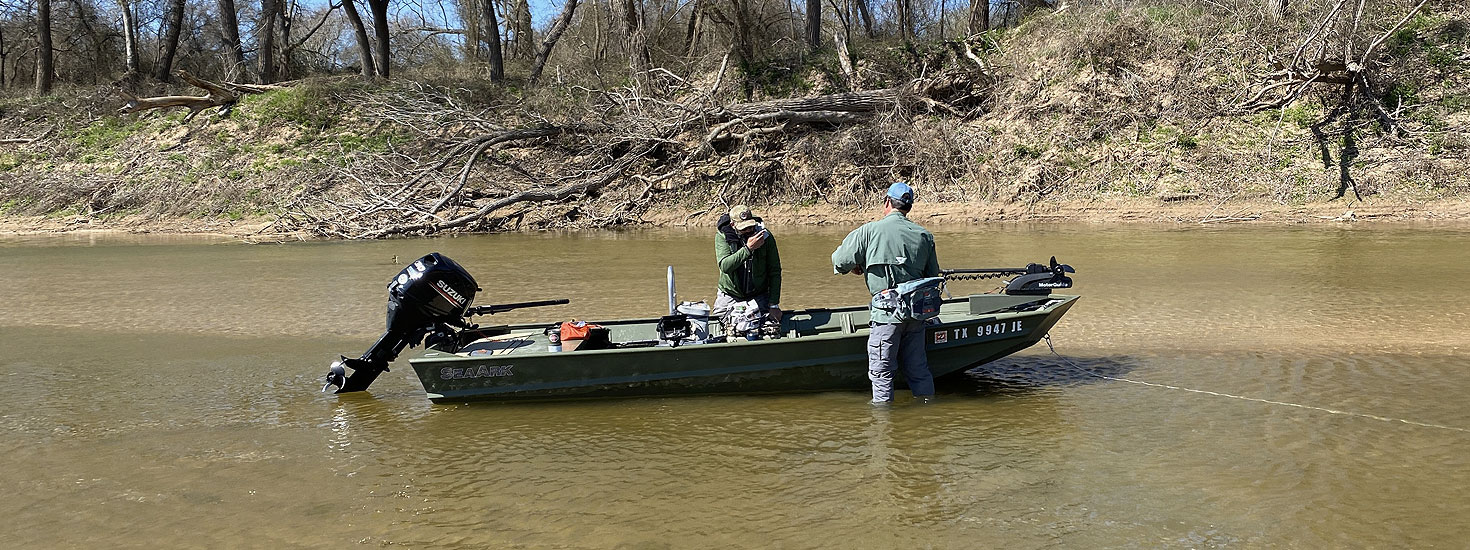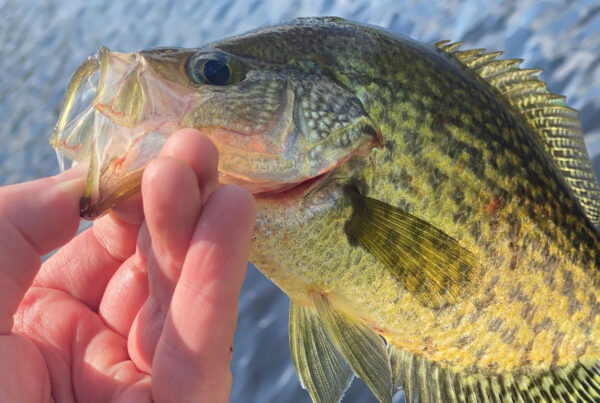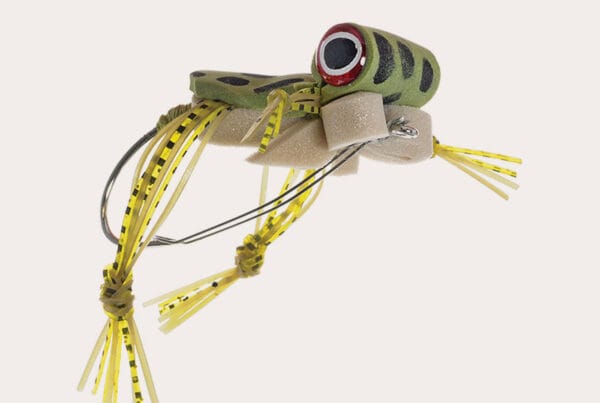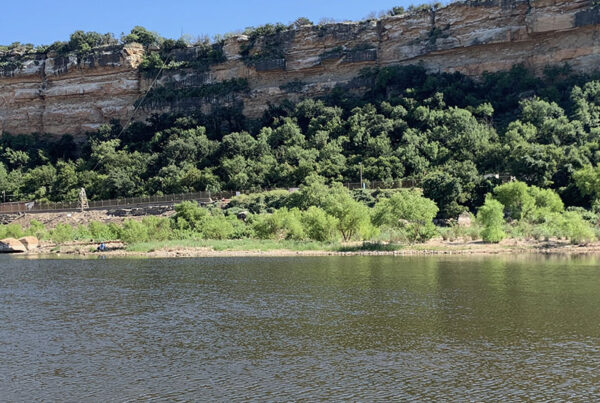White bass, often referred to as “silver bass” or “sand bass,” are a popular target for fly anglers due to their aggressive nature and the exhilarating fights they offer.
These migratory fish provide a unique fly fishing experience, especially during their spring runs up rivers and streams. If you’re gearing up for some white bass action on the fly, here are four tips to enhance your success.
1. Time Your Trip Right
White bass are most active and accessible during their spring spawning run. This typically occurs when water temperatures reach the 50-60°F range. During this period, white bass move from larger lakes and reservoirs into tributary streams and rivers. Timing your trip to coincide with this migration can result in some of the most action-packed fly fishing you’ll ever experience.
2. Choose the Right Flies
While white bass aren’t overly picky eaters, certain flies tend to be more effective than others. Here are some top choices:
- Clouser Minnows: This weighted streamer is a favorite among many white bass anglers. Its up-and-down darting motion imitates baitfish, making it irresistible to hungry bass. Opt for colors like chartreuse, white, and silver.
- Woolly Buggers: Another versatile streamer, the Woolly Bugger, can mimic various prey, from baitfish to aquatic insects. Black, olive, and white are all effective colors.
- Crayfish Patterns: In certain waters, white bass feed heavily on crayfish. Carrying a few crayfish imitations can be a game-changer.
3. Adopt the Right Technique
White bass are aggressive feeders, especially during their spawning run. However, the key to success lies in your retrieval technique:
- Vary Your Retrieve: Start with a steady, medium-paced retrieve. If that doesn’t elicit strikes, try speeding up or adding pauses. Sometimes, a twitching or jerking motion can trigger bites.
- Fish the Mid-Column: While white bass can sometimes be found feeding on the surface, they often hunt in the mid-water column. Ensure your fly gets down to the right depth by counting a few seconds after it hits the water before starting your retrieve.
4. Stay Mobile
White bass schools can be highly mobile, moving quickly from one location to another. If you’re not getting bites in one spot, don’t hesitate to move. Look for signs of feeding fish, such as surface disturbances or birds diving. Additionally, areas with current breaks, like behind boulders or submerged logs, can be hotspots as white bass rest and ambush prey in these zones.
Conclusion
Fly fishing for white bass is a thrilling endeavor, offering anglers the chance to catch large numbers of hard-fighting fish. By timing your trips correctly, choosing effective flies, mastering your retrieval technique, and staying on the move, you can enjoy some of the best white bass fly fishing action around. Here’s to tight lines and bent rods!



